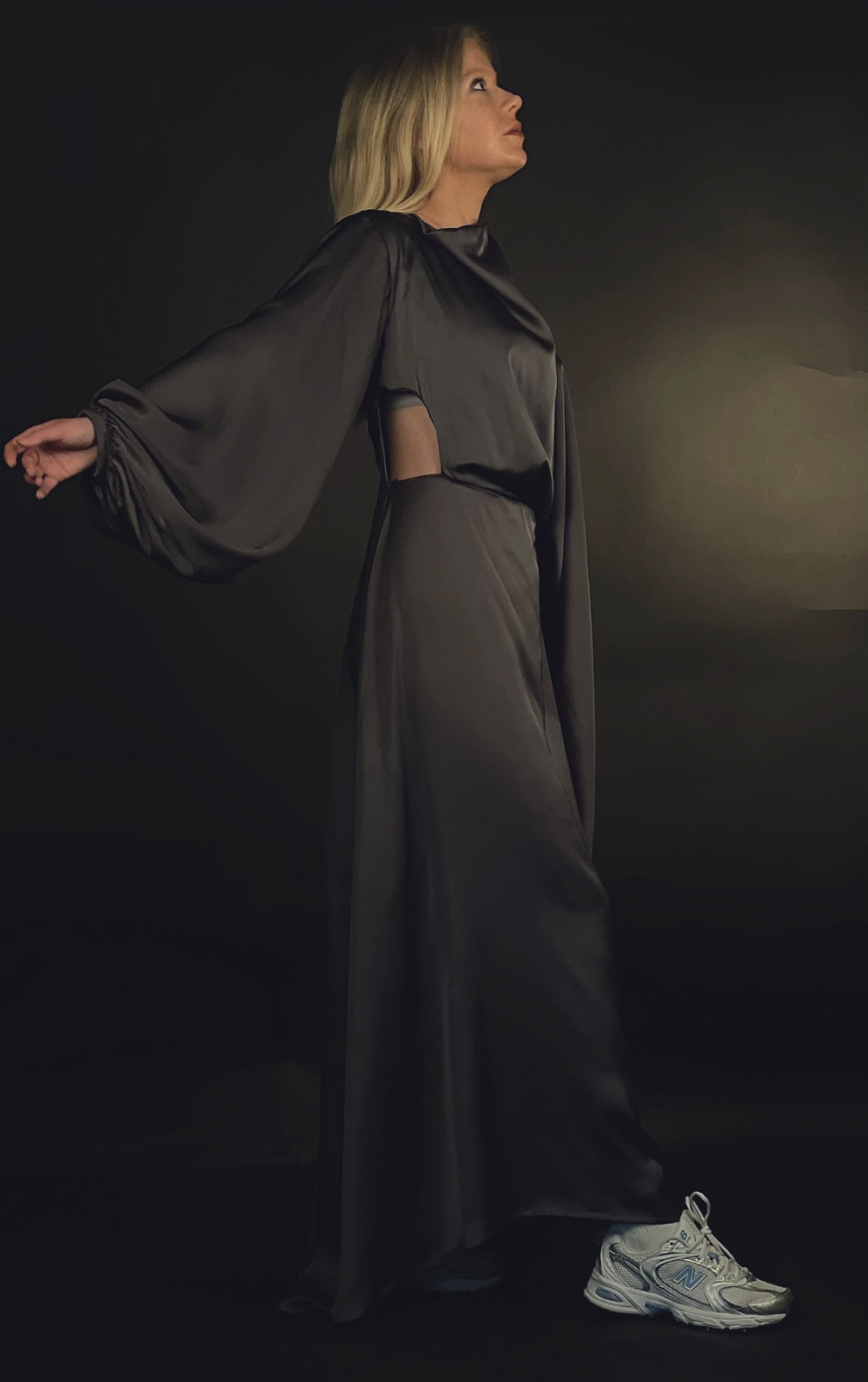In fashion, history is always close at hand. Designers borrow, reinterpret, and sometimes wrestle with the work of those who came before. For Anzal Khowaja, a grey pure silk dress from her 2022 collection acknowledges one of fashion’s greatest masters of drapery, Madame Grès. Yet while the reference is clear, the result is no imitation. This is a piece that uses history as foundation but speaks in its own language.
The design is simple at first glance, a floor-length gown in soft silk. Its power lies in the details. A single balloon sleeve billows dramatically on one side, while the other arm remains bare, creating an immediate sense of asymmetry. This imbalance makes the look striking, pulling it away from classical gowns into something unmistakably modern. It feels elegant but also unpredictable, a dress that demands attention without ever shouting.
The neckline extends this play between structure and looseness. Fabric drapes across the shoulders in folds that fall naturally, as if caught mid-motion. The collar hangs loose rather than sitting rigid, giving the dress an ease that contrasts with the drama of the sleeve. Here the nod to Grès is most evident: drapery as a sculptural technique, not decoration. But Khowaja’s version is lighter in spirit, less about recreating the past and more about opening a dialogue between tradition and today.
Photographs capture the silk’s quiet luxury. Under light it shifts between matte grey and silvery sheen, reminding us that fabric can speak louder than embellishment. Paired with crisp white trainers, the gown resists formality and asserts its modernity. The choice reframes silk eveningwear as something versatile, able to live both in high fashion and in everyday culture.
What gives the dress its strength is how it balances contradictions. Silk is often read as delicate, yet the oversized sleeve creates an impression of protection, even strength. The exposed arm beside it adds openness and vulnerability. The gown reads as both assertive and gentle, both historical and contemporary. This tension is subtle, but it gives the design depth.
There are, as with any ambitious work, details that could evolve further. The draped collar sometimes collapses more than intended, obscuring the neckline. A touch more structure could preserve its intended frame. The balloon sleeve, striking in stillness, may need refinement in movement to keep its shape controlled. These adjustments would only sharpen the statement.
What matters most is the clarity of the designer’s hand. The reference to Madame Grès brings a sense of lineage, but the design never relies on it. The asymmetry, the neutral palette, and the styling choices all belong to Khowaja’s vision. It is her interpretation of drapery, one that respects craft while pushing it forward.
In a landscape where fashion often looks for loud gestures, this gown shows the power of restraint. There is no excess here, only fabric, silhouette, and proportion used with confidence. By doing less, the design achieves more: a modern dress that feels international in its confidence and unmistakably individual in its execution.
Anza’s grey silk gown proves that history can be a starting point, not a cage. It shows an emerging designer who understands technique, honours influence, and insists on her own perspective. Quiet but assured, it signals a voice still young but already worth listening to, one that belongs in the wider conversation of contemporary fashion.

